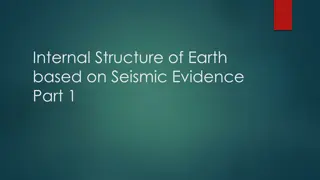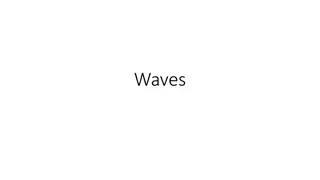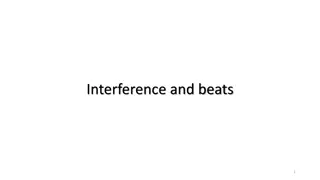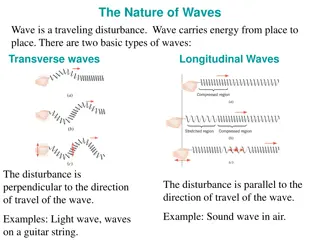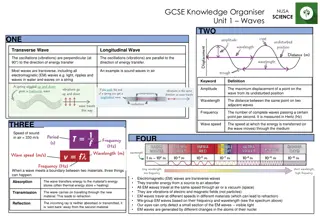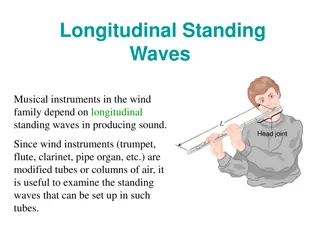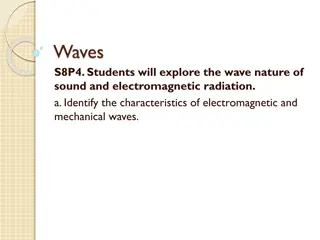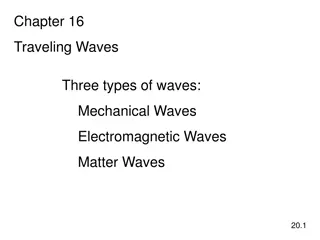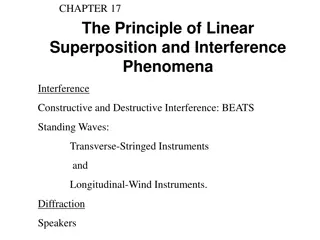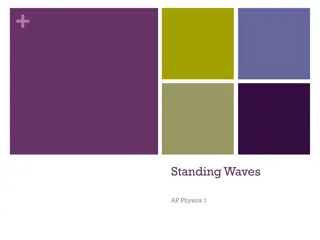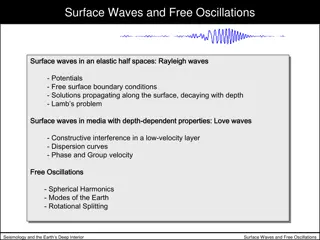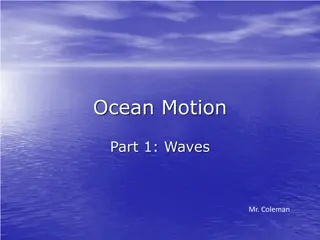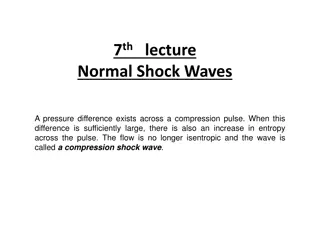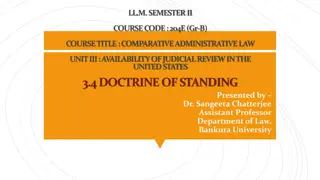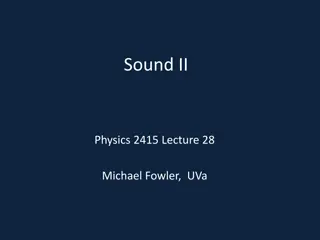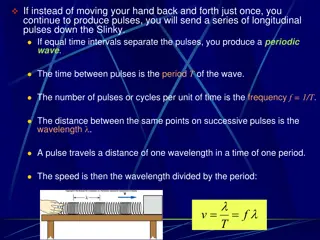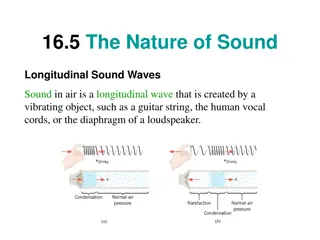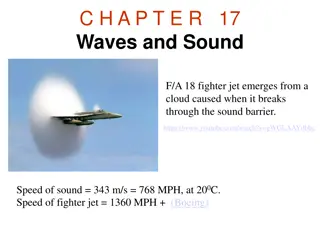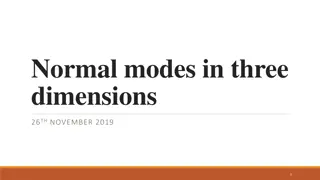Evaluation of Experimental Study on Standing Waves Formation
The evaluation report discusses the strengths and weaknesses of a presentation on standing waves, covering aspects like theoretical understanding, experimental demonstration, and presentation quality. Both the reporter and opponent are critiqued for their approaches, with the opponent highlighting the lack of theoretical depth and quantitative data in the study. The discussion during questioning reveals areas of improvement, such as the need for a mathematical model to predict standing wave phenomena.
Download Presentation

Please find below an Image/Link to download the presentation.
The content on the website is provided AS IS for your information and personal use only. It may not be sold, licensed, or shared on other websites without obtaining consent from the author. Download presentation by click this link. If you encounter any issues during the download, it is possible that the publisher has removed the file from their server.
E N D
Presentation Transcript
17. Standing waves Opponent: Team Romania - Limitless Reporter: Team Iran - Innovative Researchers Reviewer: Team Romania - Limitless 1
Task of the problem Formulate a problem about an interesting experiment where standing waves are observed. Theoretical part Definition of waves & standing waves. 2
Reporter summary Weak points Strong points Good graphical representation and explanation of the types of waves. Correct and clear standing wave formation conditions Good understanding of the basic theoretical concepts regarding the topic (wavelength, frequency, nodes, anti-nodes) Proved the phenomenon experimentally with the help of a rope Presented 2 experiments in which standing waves can be observed Mentioned few parameters, but did not measure any of them experimentally (frequency, wavelength). Lack of mathematical model for predicting the phenomenon - investigated this phenomenon only experimentally (visually) and not also theoretically. Lack of hypothesis in the experimental part. Didn t show deep understanding of the topic while answering the opponent questions (relevance of travelling waves).
Opponent summary Strong points Weak points Mentioned his own interpretation of the problem. The reporter mentioned the nodes and antinodes in his theoretical part, but the opponent persisted on this topic. Good questions and hypothetical scenarios were proposed, showing deep understanding of the subject. Mentioned the importance of measuring the frequency of the rope in the 1st experiment. Noticed lack of the mathematical model, the process of interference, lack of quantitative data and also the missing video material from experiment 2 4
O: Why are travelling waves important? R: I mentioned it in my presentation. We: Good question asked by the opponent - standing waves = result of superposition of two travelling waves O: How did you measure the applied frequency to the rope in your experiment? Clashes during the fight R: I just showed you how to make a standing wave. We: Good observation by the opponent. O: Do you know what perfect harmonics are? R: Didn t answer the question. We: Reporter showed lack of background information. O:Do you believe that standing waves appearance can be mathematically predicted? R:Yes We: Agree with the reporter; he didn t show any mathematical model in his presentation





